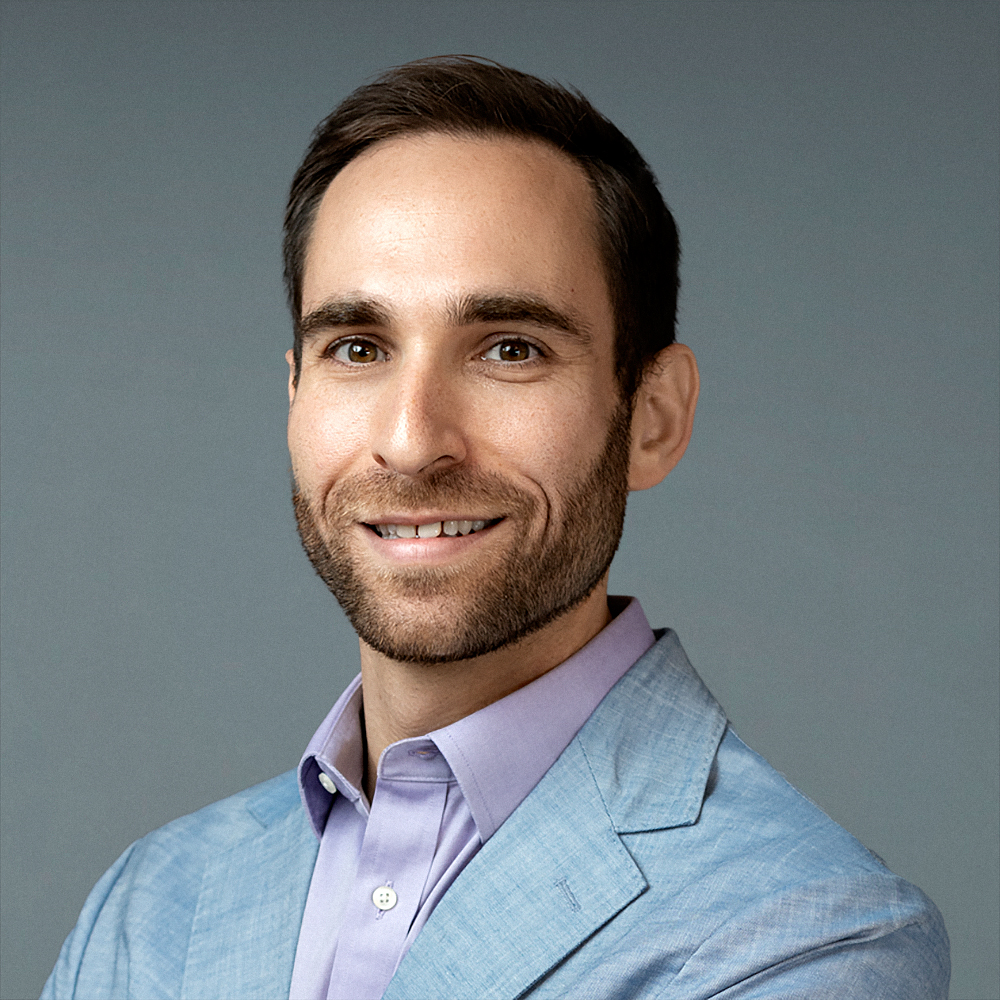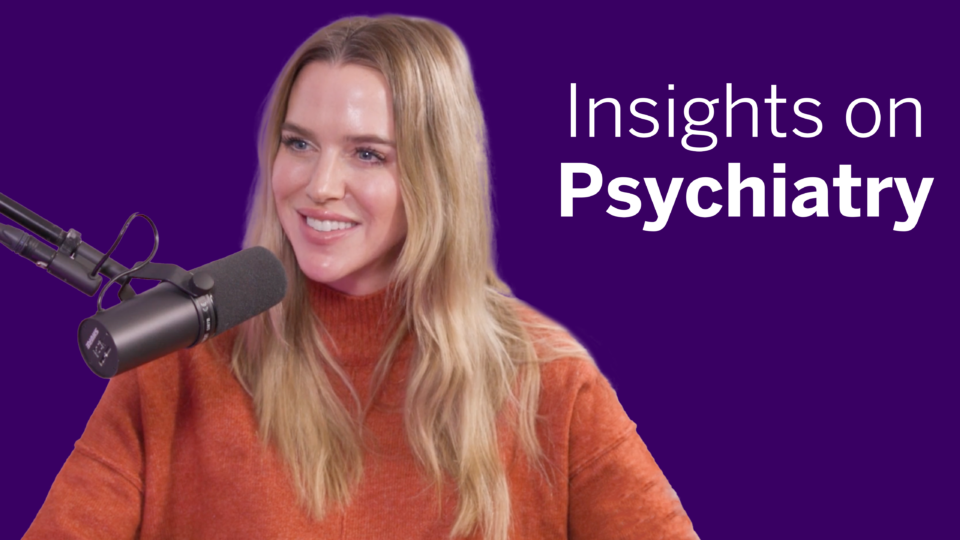Psychedelic drugs like psilocybin, a compound in “magic mushrooms,” are attracting increasing attention as potential antidepressants that can have rapid and long-lasting effects when used in the proper context. In a groundbreaking 2024 study in Nature, psychiatrist Joshua Siegel, MD, PhD, used functional MRI (fMRI) to map psilocybin’s impact on the human brain.
Dr. Siegel recently joined NYU Langone Health to expand upon his nationally recognized research on psilocybin. Here, he discusses how the drug dramatically alters the brain, how that change might be harnessed for treating psychiatric conditions, and his goals to map the brain’s reward circuits and test new psychedelic medicines.
Physician Focus: Dr. Siegel, what do we know about the therapeutic potential of psychedelics like psilocybin?
Dr. Siegel: Psilocybin is being explored for treating a range of mood and addiction disorders. In psychiatry, we conceptualize depression as this self-perpetuating and rigid cycle between thoughts, behaviors, and mood. That’s also the case with addiction, and psychedelics seem to make it easier to break out of those cycles.
In clinical trials, a single dose or two of psychedelics has an antidepressant effect that lasts for weeks. Understanding the brain mechanism behind this is a really big question.
The other exciting part is that research shows that these drugs cause plasticity at the cellular and molecular level. This literature is building off an idea, generally called the neurotrophic hypothesis, that the ability of antidepressant drugs to cause plasticity in emotional systems is central to their mechanism.
Physician Focus: How did you help clarify the mechanism behind psilocybin-induced plasticity in your Nature study?
Dr. Siegel: We used precision functional mapping, which uses high-resolution, resting-state fMRI data to detail brain connectome fingerprints and map brain networks within individuals. I contributed to projects developing these powerful discovery tools. With them, we felt we could get a more detailed look at how the drugs are affecting subcortical systems like the limbic system, which controls emotion, memory, and cognition, and is important to any psychiatric application.
Prior to our study, a few high-profile studies showed that psychedelics rapidly stimulate plasticity and formation of new connections in the limbic system, and that those last for weeks afterward. But it was not clear whether we could see a lasting effects of these drugs in human brain networks with fMRI.
Our study involved healthy adults taking psilocybin or the active placebo while in an MRI scanner. They returned three times a week for weeks afterward to see if there were lasting changes in brain areas known for plasticity effects in animal models.
Physician Focus: What were the study’s biggest takeaways?
Dr. Siegel: First, we observed that after a high dose of psilocybin, there is a very large disruption to functional connectivity, a measure of how areas of the brain are communicating. The changes were largest in the default mode network, which we know is related to self and mood disorders.
Previous evidence suggests that the default mode network is overactive in people who are ruminating and depressed. Some previous studies had linked the effects of psychedelics to the default mode network. But we showed that there’s a very large disruption, much larger than a placebo and much larger than engaging in a task.
In fact, psilocybin changes brain connectivity as much as the difference that exists between two individuals. Your brain has a pretty stable fingerprint of connectivity, and a high dose of psilocybin puts it into such an altered state that it’s as if you’re a different person.
“Your brain has a pretty stable fingerprint of connectivity, and a high dose of psilocybin puts it into such an altered state that it’s as if you’re a different person.”
Joshua Siegel, MD
Second, this disruption likely stemmed from the multiscale desynchronization of neural activity. At the level of very small collections of neurons, they go out of synchrony with a high dose of psychedelics, basically. But you can also see that phenomenon when you scale up to the level of the whole brain.
That desynchronization is probably connected to why you have this burst of plasticity after taking psilocybin, and why these drugs are called neuroplastogens.
Physician Focus: Did your study help address how much of the lasting antidepressant effect may be due to the placebo effect?
Dr. Siegel: Well, we did see a lasting change in the weeks afterward. There’s a reset in this circuit between the default mode network and the hippocampus as a consequence of the acute psychedelic trip, and that’s something that really hadn’t been measured and observed yet.
That is of particular clinical relevance because this was a very strong effect. To show that these parts of the brain related to the sense of self are changing in a pretty substantial way and that the change is lasting for weeks afterward gives a biological underpinning to say it’s not just a placebo effect.
Physician Focus: How do you address the risks associated with psychedelics?
Dr. Siegel: While promising, psychedelics are not risk-free. Potentially lasting negative effects include derealization, where people feel disconnected from reality, confused, or disoriented. Another danger is hallucinogen persisting perceptual disorder—“acid flashbacks.” These tend to occur in frequent users or those with a personal or family history of psychosis.
But being in a clinical trial is a very strong mitigator of risk. We screen participants for risk, and there’s good evidence that structured preparation and doing this with a trained therapist decreases the likelihood of lasting negative effects.
Physician Focus: What’s next for your research?
Dr. Siegel: Part of my excitement about being able to join the NYU Langone Center for Psychedelic Medicine is that they have been doing phenomenal clinical research with psychedelics. My goal is to test out how these brain changes relate to clinical benefit, and whether we can use them to optimize treatment.
I’m writing a grant to apply precision functional mapping to study anhedonia, which is emotional blunting and lack of reward response and motivation. We’ve beautifully mapped out the reward system in mice. With modern fMRI tools, we can now map out the system in humans with almost as much resolution.
Another focus is using brain imaging biomarkers to develop new treatments. Many companies are trying to develop novel psychedelics and they need to determine brain penetration, safety, and optimal dose. I’m building tools they can use for what we call target engagement, such as biomarkers for early-phase clinical testing of new rapid antidepressants. Psychiatric drugs have a higher failure rate in late-stage clinical trials than almost any other area of medicine, because our animal models just aren’t that great. Refining early human testing is critical to advancing new therapies.






